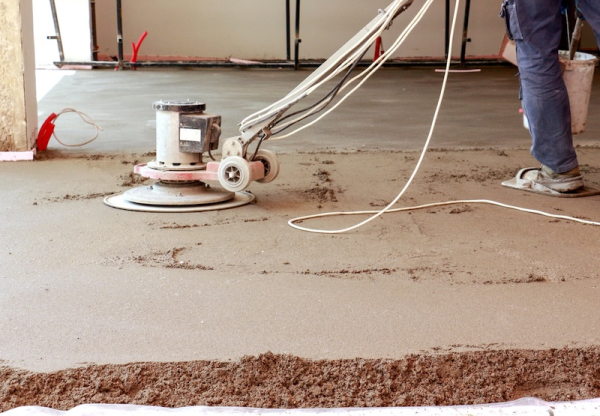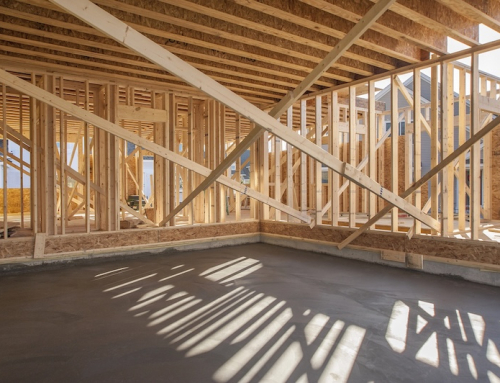Have you heard from a friend who recently built a garage or redid their patio, and that concrete didn’t hold up as well as expected? It’s usually not the installer. In most cases, it comes down to using the wrong grade of concrete for flooring. That’s the mix ratio that determines how strong the surface will be once it cures.
Not all floors need the same strength. A basement slab isn’t under the same pressure as a driveway or garage that supports vehicles. If the grade doesn’t match the use, you’re more likely to see cracking, dusting, or early wear.
Whether you’re building new or upgrading existing concrete, choosing the right strength helps your floor last longer with fewer problems. This guide shows homeowners how to select the best grade of concrete for each part of the house, so you can do it right the first time.
Understanding Concrete Grades: What Do M20, M25, and M30 Mean?

If you’ve heard terms like M15 or M25 thrown around during a flooring project, you’re not alone. These grades help define the strength and durability of the concrete you’ll be walking—or parking—on for years.
Explanation of M Grades (Mix Ratio + Strength)
The “M” in concrete grades stands for “Mix,” followed by a number indicating compressive strength in megapascals (MPa). The higher the number, the stronger the concrete. For example, M20 has a strength of 20 MPa after 28 days of curing.
Each grade corresponds to a specific mix of cement, sand, and coarse aggregate. Here’s a quick overview:
- M15 – 1:2:4 ratio
- M20 – 1:1.5:3 ratio
- M25 – 1:1:2 ratio
Stronger grades often include additives or reinforcements, especially for structural or load-bearing use.
Strength Comparison Table
Below is a quick comparison of common concrete grades, their compressive strength, and where they’re typically used in residential or light commercial projects. This makes it easier to match the right mix to the needs of each space.
|
Grade |
Strength (MPa) |
Typical Use |
|---|---|---|
|
M15 |
15 |
Walkways, blinding, non-load-bearing slabs |
|
M20 |
20 |
Residential floors, patios, driveways |
|
M25 |
25 |
Garages, external slabs, and light commercial use |
|
M30 |
30 |
Commercial flooring, parking areas |
|
M35 |
35 |
Heavy-use zones, small industrial projects |
|
M40 |
40 |
High-load structures, industrial foundations |
Best Grade of Concrete for Flooring in Residential Spaces
Choosing the right grade of concrete for flooring depends on where it’s going and what kind of weight it will support.
Garages, Patios, and Basements
For spaces that support vehicles or outdoor elements, M20 to M25 is ideal. These grades provide the strength needed for constant loading, thermal stress, and Florida’s humidity. If you’re planning to install a decorative concrete overlay or epoxy coating, M25 offers better durability in the long term.
Interior Spaces (Living Rooms, Kitchens)
Interior concrete floors don’t carry as much weight but still need a solid base, especially if you’re adding coatings or underfloor heating. M15 to M20 works well for living spaces as long as the surface is properly sealed and prepped. Surface leveling and moisture control are key here to ensure coatings or floor finishes bond well and last.
Whether you’re planning a new build or upgrading an existing slab, using the right concrete mix for each space helps prevent cracking, shifting, or early wear. When in doubt, ask your contractor which grade of concrete for flooring matches your needs best.
Best Concrete Grades for Commercial Flooring
When it comes to commercial floors, strength and durability matter, but that doesn’t mean every space needs the highest grade of concrete for flooring available. The right grade depends on how the floor will be used and what kind of weight it needs to support.
Warehouses and Loading Bays
For areas with forklifts, pallet jacks, or heavy storage, M25 to M30 is a solid choice. These grades are designed to handle constant pressure, heavy loads, and frequent movement without cracking. If you’re pouring slabs for a warehouse or loading dock, higher-strength mixes offer better long-term performance and fewer repairs.
Restaurants, Showrooms, and Retail Stores
In customer-facing spaces like restaurants or retail stores, you’ll want strength and style. M20 to M25 works well here. These grades provide the structural support you need while allowing for decorative finishes like polish or stain. It’s a good fit for floors that see a lot of foot traffic but not heavy machinery.
How Climate and Use Affect Your Concrete Grade Choice
Your environment and daily use also influence which concrete grade will hold up best over time. Florida’s moisture and heat, for example, require careful planning.
Moisture and Freeze-Thaw Conditions in Florida
Humidity and rain can affect concrete’s strength if the wrong mix is used. For outdoor spaces or slabs exposed to weather, it’s smart to choose a grade like M25 or higher and make sure it’s sealed properly. That helps protect the surface from water intrusion and wear.
Foot Traffic vs Vehicle Load vs Heavy Machinery
Always match the mix to the heaviest use, not just the average. Foot traffic alone may only need M15 or M20, but if vehicles or carts come through even occasionally, M25 or above is a safer bet. It’s about planning for real-world use, not just what looks good on paper.
When to Choose Higher-Grade or Reinforced Concrete
Some projects demand more than just the right grade of concrete for flooring. They also need reinforcement. When the slab will carry extreme weight, support a raised structure, or deal with constant movement, it’s smart to consider either a higher mix grade or a reinforced design.
Here are common cases where you may need to level up your concrete:
- Structural slabs and elevated decks – These require stronger mixes like M30+ and usually include steel reinforcement to prevent cracking and deflection over time.
- Commercial ramps and drive lanes – Slabs exposed to frequent vehicle loads or sharp turns benefit from both higher-grade concrete and rebar to maintain integrity.
- Industrial use or storage yards – For floors that support industrial vehicles, stacked inventory, or machinery, fiber-reinforced concrete helps control shrinkage and reduces surface stress.
- Exterior slabs with large surface areas – In high-moisture or freeze-prone zones, stronger mixes combined with reinforcement reduce surface shifting and extend durability.
Before you pour, talk with your contractor about whether your project needs steel rebar, fiber mesh, or both. Reinforcement isn’t just for heavy-duty applications; it also helps preserve the life of the slab under regular use.
Do You Always Need New Concrete? Resurfacing Is Often Enough
If you already have a solid concrete slab in place, a full replacement may not be necessary. Concrete resurfacing can restore strength, update the appearance, and save on costs.
Common resurfacing options include:
- Decorative overlays – Add texture, patterns, or color to update plain concrete
- Epoxy finishes – Improve durability, moisture resistance, and slip control
- Polished concrete – Delivers a sleek, low-maintenance finish with high light reflectivity
Most of these options work well on M20 and higher-grade slabs in good structural condition. Creative Resurfacing Solutions can evaluate your surface and recommend whether resurfacing is a cost-effective alternative to full replacement.
Match Grade to Purpose, Not Just Price
Trying to cut costs by choosing a lower grade of concrete often leads to higher repair bills down the line. The right concrete mix helps prevent cracks, surface wear, and premature failure, especially when matched to the purpose of the space.
Creative Resurfacing Solutions helps homeowners and commercial clients choose the right grade of concrete for flooring, then finishes it with durable, long-lasting results. From reinforced slabs to decorative overlays, their team delivers surfaces built to perform.
Frequently Asked Questions
What is M20 concrete used for?
M20 concrete is commonly used for residential slabs, patios, driveways, and low-load structural elements. It has a compressive strength of 20 MPa, making it a reliable choice for general flooring applications around the home.
Can I use M15 concrete for a garage floor?
M15 is not recommended for garage floors. It doesn’t provide enough strength to handle the weight of vehicles over time, which can lead to cracking or surface damage. M20 or M25 is a safer choice for that kind of load.
What grade of concrete is used for commercial buildings?
Commercial buildings typically use M25 to M40, depending on the structure and load requirements. Warehouses, ramps, and parking areas often need higher grades to support constant traffic and heavy equipment.
Is higher-grade concrete always better?
Not always. Higher grades offer more strength, but they also cost more and may be unnecessary for light-use areas. The best choice depends on how the surface will be used and where it’s located.
How can I determine the grade of my existing slab?
The grade of an existing slab isn’t always obvious without testing. A contractor can take a core sample or conduct a rebound hammer test to estimate compressive strength and help you decide if the slab is suitable for resurfacing or needs replacement.






